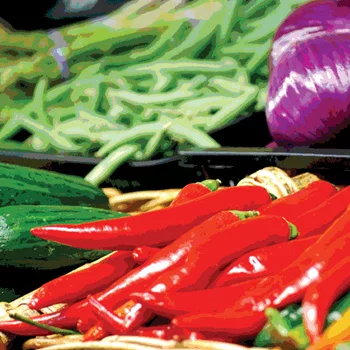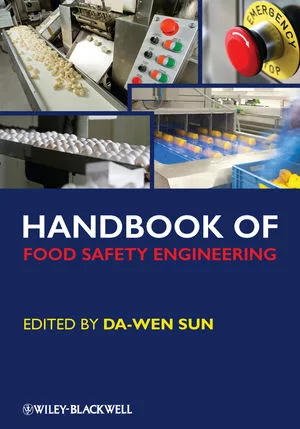Exploring Implications of Mandatory Safety Standards

Every year in the United States, foodborne illnesses cause sickness, death and significant economic and social costs that extend beyond the immediate victims. To address these issues, President Obama recently created a Food Safety Working Group tasked with determining how to reduce foodborne illness. In the meantime, The Produce Safety Project at Georgetown University has urged the U.S. Food and Drug Administration (FDA) to establish mandatory safety standards for fresh produce.
However, there are significant inherent challenges in the implementation and enforcement of safety standards, primarily due to multiple stakeholder involvement, increased complexities in the food production and distribution chains and fragmentation of oversight responsibilities.
Mandatory Standards on the Horizon
Mandatory safety standards for produce appear to be on the horizon. The FDA has developed voluntary guidance documents for produce safety standards, as have various coalitions and organizations in the produce industry. To date, Congress has introduced several bills with provisions that would direct the FDA to establish standards for the safe production and harvest of fruits and vegetables. Additionally, public interest groups are vigorously advocating for the government to adopt and enforce mandatory safety standards.
In recognition of this growing movement toward mandatory produce safety standards, an interactive simulation, including representatives from a wide variety of stakeholder groups, was undertaken to stimulate a forward-looking dialogue. One specific type of commodity—domestic fresh leafy green produce—was used in the simulation for the purpose of encouraging focused and meaningful discussion. However, participants examined issues that are truly applicable across all commodities.
The goal of the simulation was to assess the potential implications of mandatory produce safety standards and identify insights into how standards might best be shaped today as a result of exploring these implications.
Simulation Design
The concerns surrounding produce safety are issues that no single party can address independently. The simulation, in which teams communicated, coordinated and made decisions, was designed to foster mutual understanding of the various standards implementation and enforcement challenges faced among the stakeholders. Participants worked within and across teams to better understand the cascading effects of actions on different stakeholders, and how subsequent actions and assumptions could compound or alleviate problems.
The participants examined such key questions as the following:
• What are the challenges associated with implementation?
• Are such standards enforceable? If so, how?
• What resource outlays are associated with standards implementation (e.g., compliance and enforcement)? Who must bear the burden?
• How might such standards be modified to mitigate challenges and improve enforceability?
Throughout the simulation, new elements were introduced to facilitate interaction between the teams. For example, mandatory standards requiring safety measures from pre-harvest activities through final processing prior to retail were introduced. These standards included microbial testing requirements for irrigation water, soil amendments and crop treatments. Risk management planning for domestic fresh leafy green produce and detailed recordkeeping were also critical standard components. Equivalent safety standards were also put in place for imported fresh leafy green produce.
Through this type of engagement, participants were able to gain invaluable insights into each other’s perspectives.
Considerations for Future Standards
As a result of stringent, mandatory standards presented as part of the simulation, participants were forced to confront a challenging and complex compliance and enforcement environment. The focus of the simulation was not on the standards themselves, but the standards were developed to drive participants to learn from analyzing what attempting to implement and enforce them could reveal.
As each team presented its responses (e.g., actions and concerns) to the larger group, common themes and insights consistently emerged.
Standards should be universal and ensure a “level playing field.”
Standards for produce, including those covering imports and produce sold only within a particular state, must be universally applied and enforced to the extent feasible. Standards developed in isolation from one another for different stages of production may be incon-sistent, likely making it impossible to ensure the safety of produce. Conse-quently, standards should be applied to the supply chain both horizontally and vertically, from produce growing through distribution.
Standards must take into account differences between specific commodities and growing regions.
Although standards should be uniformly applied and enforced, they must reflect differences from one commodity to another and from one growing region to another. Different commodities have different growing characteristics and, thus, have different associated risks, concerns and responses. Different regions also have unique considerations that must be taken into account to create standards that can be implemented successfully by producers.
A scarcity of resources complicates effective implementation and enforcement of mandatory standards.
Given the current scarcity of resources available to address food safety in general, significantly greater investments would be required to meet standards like the ones described in the simulation. Resources are needed at every level; for example, an enhanced infrastructure, utilizing information technology and recordkeeping/data processing capabilities, would enable more effective data sharing across multiple parties.
The issue of produce safety requires science- and risk-based approaches.
Scientific research and risk analysis can be lengthy processes, and situations may arise in which interim measures may need to be adopted quickly. How-ever, a careful, methodical approach, based on science and analysis of current risks, should be applied to the fullest extent possible with regard to produce safety. Science and risk analysis should determine the setting of specific requirements and guide how standards are implemented and enforced. Using this approach will better ensure that the standards created will be effective in protecting public health. This is an area in need of immediate investment.
Standards must be nimble and updated continuously.
Agricultural and manufacturing practices, as well as scientific knowledge of health risks, continually advance. Once mandatory standards are in place, a slow and cumbersome regulatory system could impede continuous improvement and even discourage research and development. Standards should instead be crafted to be nimble and flexible, to provide an overall framework for implementation and be reflective of evolving science. The standards should also be supplemented with a rich set of commodity-specific guidelines for compliance and enforcement. For the standard-setting process to occur in a timely manner, built-in processes are needed to refine, revise and re-publish the guidelines periodically based on feedback and developments.
Standards need to be implemented using a phased approach.
A carefully designed phasing-in of mandatory standards will be important if they are to succeed. Introducing standards in phases acknowledges differences in capacities among various sectors. For example, phasing might require larger businesses to implement standards at a certain point and provide additional time for smaller businesses with limited resources. Additionally, a phased approach will allow for feedback to be received from all stakeholders at each stage of implementation. Course corrections can occur during the process, building a solid foundation for each standard that will subsequently be introduced.
The standards development process must be transparent and engage all stakeholders.
Because each stakeholder in the standards environment has a unique perspective, each needs to have an active voice and participate in the formulation of standards. A productive, multiple stakeholder dialogue aimed at defining an implementable plan to resolve conflicts and competing priorities will lead to the creation of optimal standards that are more likely to succeed. Involving all stakeholders in the process will also create transparency and is more likely to generate stakeholder support from the onset.
Striking a Balance
Although the participants in the simulation may have used different words or come from different back-grounds, they expressed similar concerns when discussing the potential future of mandatory produce safety standards. While these standards are foreseeable and will enhance the overall integrity of our food safety system, there are critical issues that must not be overlooked. The balance between universal application of standards and an accounting for differences between commodities and growing regions is a critical aspect of standards development.
As with the development and review of standards in any industry, the ability to remain adaptable to new information and new methods will serve to ensure that standards continue to meet real requirements over time. In seeking to expeditiously implement new safety practices, we must not lose sight of the complex inner workings of this industry or overlook the need for a thoughtful, phased approach to address food safety challenges.
Stakeholders have had numerous past dialogues around the development of mandatory standards for leafy greens, produce and food in general, and will continue to drive these efforts in the future. These lessons learned provide pragmatic suggestions for ways in which standards can be crafted to be both implementable and enforceable for produce and other commodities.
The content described in this article is based on The Produce Safety Summit: Implications of Mandatory Safety Standards that was sponsored by Booz Allen Hamilton and the Produce Safety Project at Georgetown University. It sought to examine how best to ensure food safety and reduce foodborne illnesses resulting from consumption of fresh produce.
Susan Penfield, a vice president at Booz Allen Hamilton, specializes in the management and strategic use of health information within the national health industry.
Lucy Stribley is a principal with Booz Allen Hamilton, specializing in management and technology support for federal public health and life sciences clients.
Mike Breck, a senior associate at Booz Allen Hamilton, focuses on leveraging firm-wide capabilities to solve food safety challenges and on managing large information-technology programs and projects.
Looking for quick answers on food safety topics?
Try Ask FSM, our new smart AI search tool.
Ask FSM →







